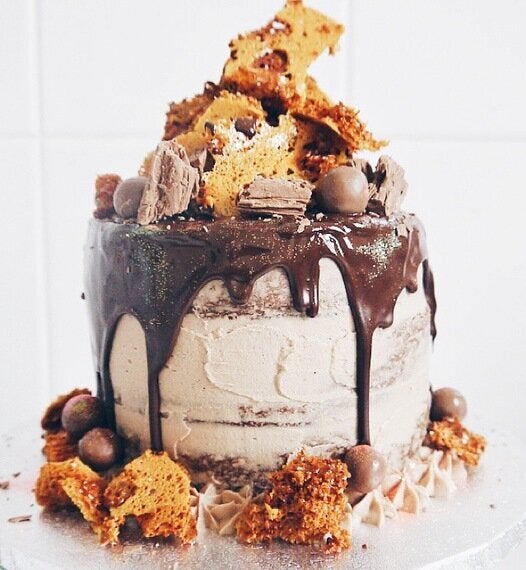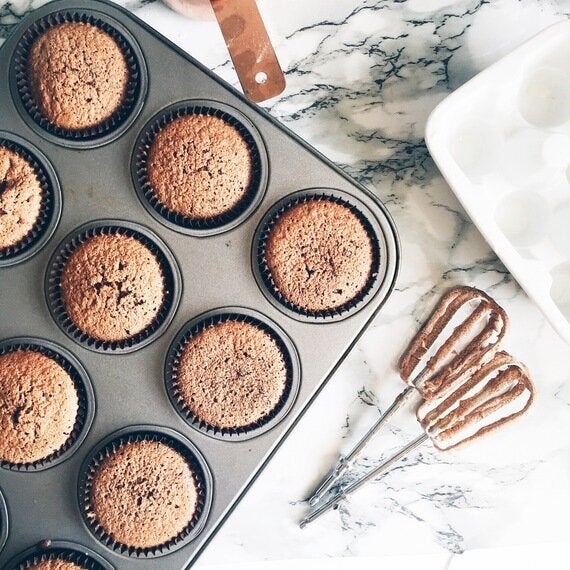It's been a week since The Great British Bake Off final, and a new study from National Accident Helpline shows that one in four people haves been inspired to bake more. But, baking enthusiasts might not be reaching 'star baker' standard every time, as two thirds of people say they've injured themselves whilst baking or cooking.
As a baking blogger, I'm well versed on the hazards of hot caramel, electric mixers and how to safety carry off a fancy flambé.
It's great to hear more people are inspired to whisk up a treat - so here's my list of the top hazardous bakes, so you can look after your safety and create a showstopper!
1. Caramel/Toffee
It's so easy to burn yourself when baking caramel or toffee. The heated sugar is prone to splatter, make sure you wear long sleeves, an apron and an oven glove when handling the pan.
2. Honeycomb
Honeycomb starts life as a form of caramel so you should be extra cautious when stirring the pot. However, once the bicarbonate of soda is added, the caramel expands to almost double the size. To avoid any overflow, it's vital to ensure your pot is big enough.

3. Donuts
Baking donuts requires plunging your risen balls of dough into cooking oil at temperatures of up to 191 degrees. Temperatures this high can easily start fires or cause serious third degree burns. You should always add the oil to a cold, clean and dry fryer. Avoid letting water come into contact with the bubbling oil, as this will make the oil splatter.
4. Chopping nuts
It goes without saying that nuts and knifes aren't the best combination. But you can prevent nasty accidents by using other methods. You could pour them into a zip lock bag and crush them with a rolling pin, or blitz them in a food processor. When using a knife, keep your fingers away from the blade by placing the palm of your hand at the top of the knife to keep the nut you are chopping stable.

5. Citrus curd
I wish the tiny scars on my knuckles and finger tips told much more exciting tales but truth be told, the majority of them are down to a cheese grater. I love making lemon curd and enjoy zesting citrus, but the best way to avoid such incidences would be to wear silicone gloves and hold the citrus fruit with your knuckles facing away from the grater blades.
6. Crème brûlée
There's a good reason we use a blowtorch when melting sugar toppings for crème brûlée and browning meringue pies - they blast out intense heat and do the job in seconds. You don't want this in contact with skin or loose clothing. Ensure the safety lock is on when not in use, and that your sleeves are rolled up, tea towels are tided away, and aprons are tied tightly.

7. Dumplings
When making dumplings steam may try to escape - check on them at the wrong moment, and this steam could spit onto your face or neck. Burns caused by steam can be really serious, and leave lifelong scars. Always open the lid of the steamer away from you, and use oven gloves and tongs to move the dumplings around.
8. Marshmallow
Making marshmallow is an easy process, but you need to take care. Under no circumstance should the sugar be touched directly. Use a sugar thermometer and always use heat-safe utensils like wooden spoons, to prevent burning your hands. When you transfer the syrup into your electric mixer, pour slowly, to avoid hot splatters and raise the speed slowly until it's well combined.
9. Using Freestanding Mixer
They're beautiful accessories and the perfect kitchen assistant, but in series 3 of Great British Bake Off Bake Off Winner John Whaite showed how hazardous electric mixers can be. Often recipes will call for you to add ingredients while the mixer is still going, so keep your fingers as far away from the blade as possible, and use a spoon or a long cocktail stick to add ingredients.
10. Crepe Suzette
Adding a little alcohol to a dish is a great way to boost flavour and if you're feeling flashy doing this via flambé can also provide a great source of dinner party entertainment. But never add the alcohol directly from the bottle, as flames could enter the bottle causing it to explode. Add the alcohol to the pan off the heat. TV Chefs demonstrate flambé by tilting the pan over a gas flame to ignite the alcohol, but they're professionals so this method is to be avoided at all costs. Make sure you stand back as the flame will be higher than you think, and turn off your extractor fan, as this can draw flames up. After 30 seconds the flame should have died out naturally.
